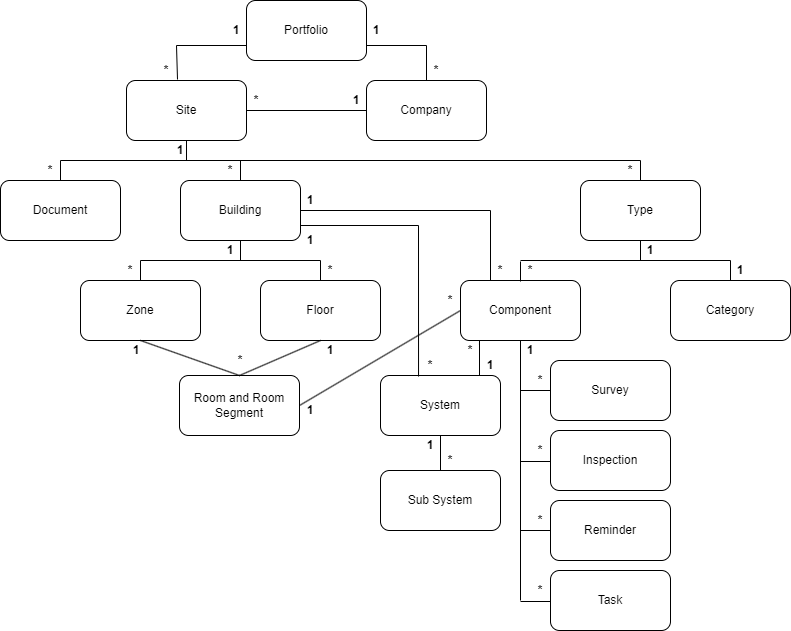Lifecycle Twin API¶
The Lifecycle Twin API enables you to create and manage various objects in the Lifecycle Twin.
The Lifecycle Twin API is organized around:
- Portfolio, Companies, Sites, Buildings
- User, User Groups, Roles
- Assets, Documents, Jobs
- Model, View, Import, Export
- Issues, Tags, Surveys
Concepts & Glossary¶
| Term | Description |
|---|---|
| Portfolio | A customer subscription to Lifecycle Twin. Brings together customer's configurations, sites and building data. |
| Company | A company describes the contact information of the organization. A company basically tied to the user or used as a manufacturer for an equipment. |
| Site | A site is a grouping of multiple Buildings and Outside spaces. Typically it is physically represented by a fence, vegetation or street. It could be a contiguous area like a fenced-in airport or a looser aggregation like a government district (consisting of multiple individual buildings). |
| Document | A document is generally a file which is directly related to a site, building or other assets. A document includes drawings, operations manuals, instructions, floor plans and others. Documents may contains 3D models as well. |
| Building | A building is generally a structure built for a purpose that has a roof and walls and stands more or less permanently in one place. Typical examples are a house, factory, or shop; but if necessary also a cave, tower, tent or even a ship or bridge could be called a building. |
| Zone | Zones represent the where aspect of building automation, combining functional and spatial aspects. Examples are comfort zones, fire alarm zones or lighting zones. |
| Floor | A floor is a horizontal / level part of a building with a surface that could be used by people (for living, work, storage, recreation, etc), depending on context, they are also called storey/story, level or deck. Multiple floors can be stacked up vertically to form a multi-floor building. |
| Room | A room is an indoor space enclosed by walls (and a roof or ceiling) to which entry is possible by a door or similar, which connects it either to a passageway, to another room, or to the outdoors. Normally, rooms are large enough for several persons to enter and move about or conduct the intended activity. |
| Room Segment | Often, a floor is implicitly divided into a grid or into segments that later on might turn into rooms by adding walls. Such segments often contain technical preparations for possible rooms (e.g. pillars, grids, window arrangement, piping or wiring) |
| Type | Describes common specifications of a component like physical dimension, color, manufacturer, etc. Typically it provides definition of a model. Type doesn't represents a physical instance. |
| Component | Physical instance of a device or equipment. It can be any object like Wall, Pipe, Pipe Segment, Door, etc. |
| Category | Its a property of a Component and Type which group them by functional purposes. |
| System | A System contains a machinery and heavy equipment installed for the operation of a service. A system consists of partial systems, aggregates and components (equipment). |
| Sub System | A part of a System. Represents smaller section of it. |
| Task | Based on the use case a task represents an issue, work order or task related with a component, room or document or a registration of an event or emergency in a building or construction site. All tasks have a workflow and use responsible to the contribution of it. |
| Inspection | An inspection is an order to execution of examination of a component or space. Inspection is characterized by digital form needs to be populated on execution. |
| Survey | A functionality that enables the collection of information about a component on a mobile device via the use of digital forms for the purpose of collecting general information to solicit information during construction or operations. Surveys are created on the web desktop application and executed on mobile application. |
| Reminder | An escalation of the overdue tasks to generate downloadable PDF reports of statuses and details of each task |
